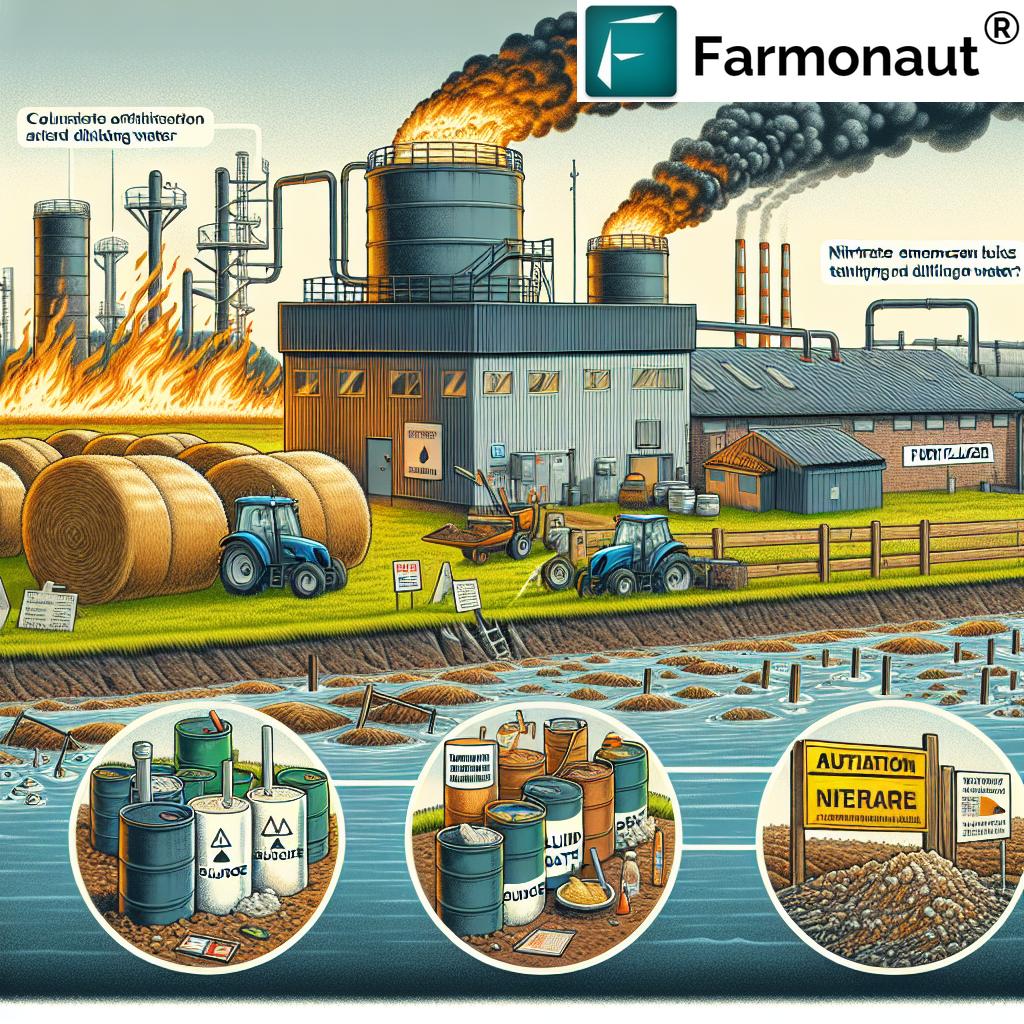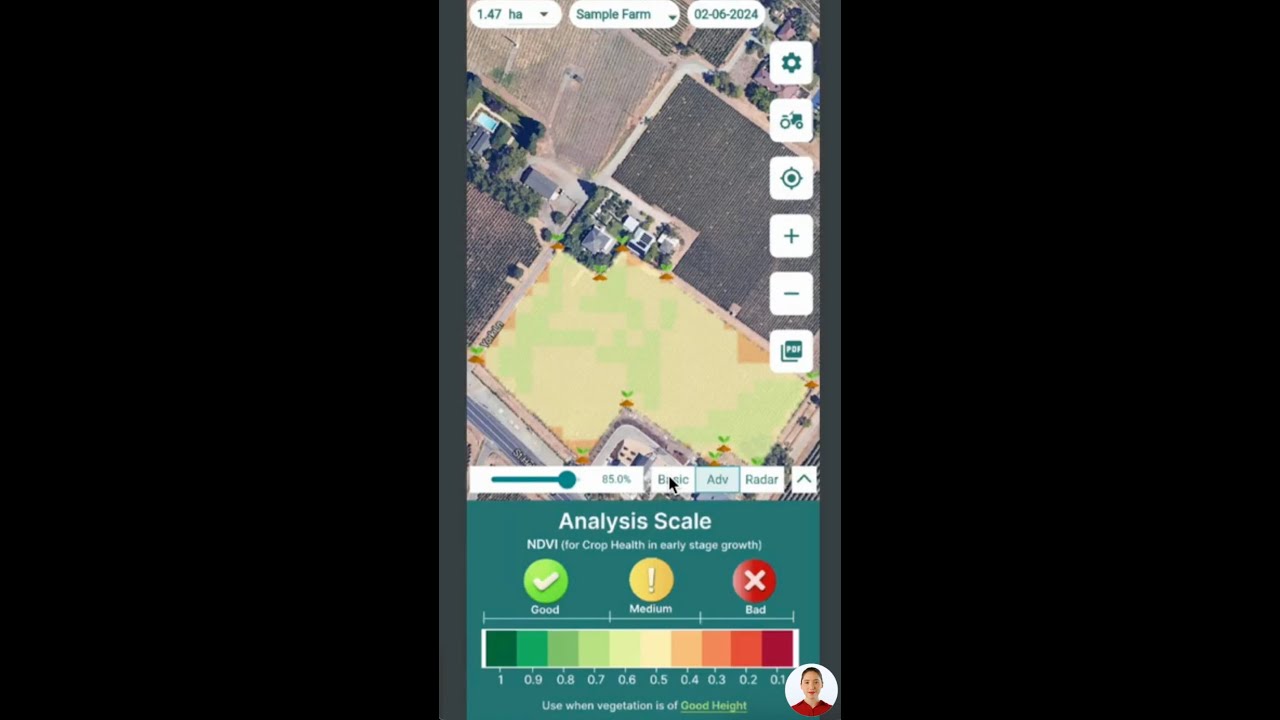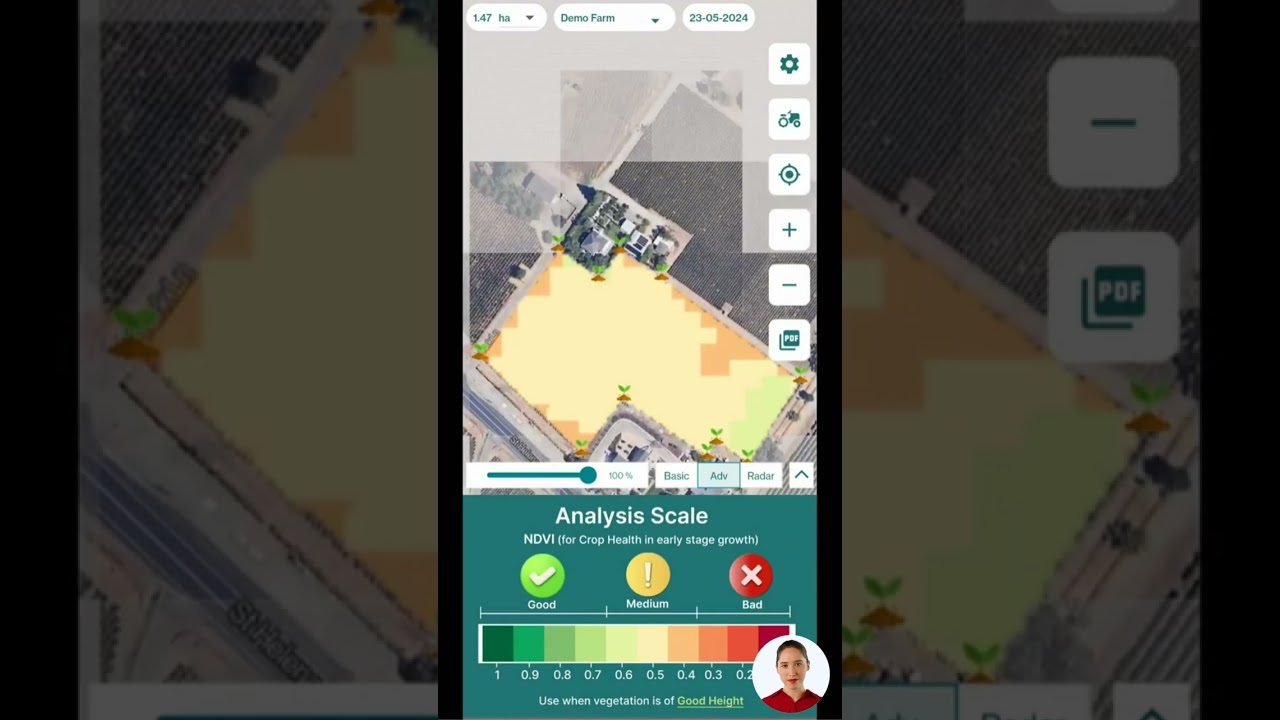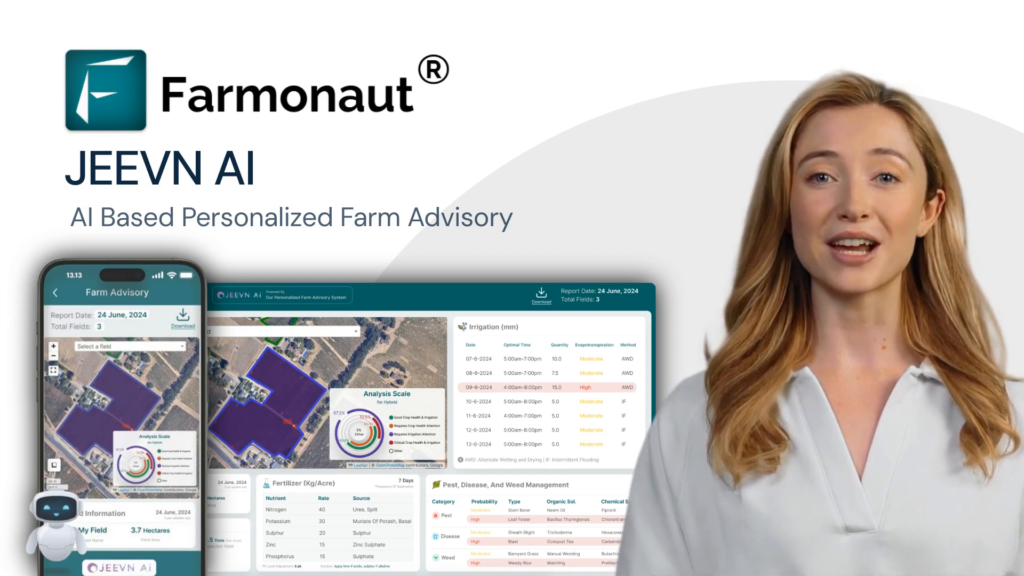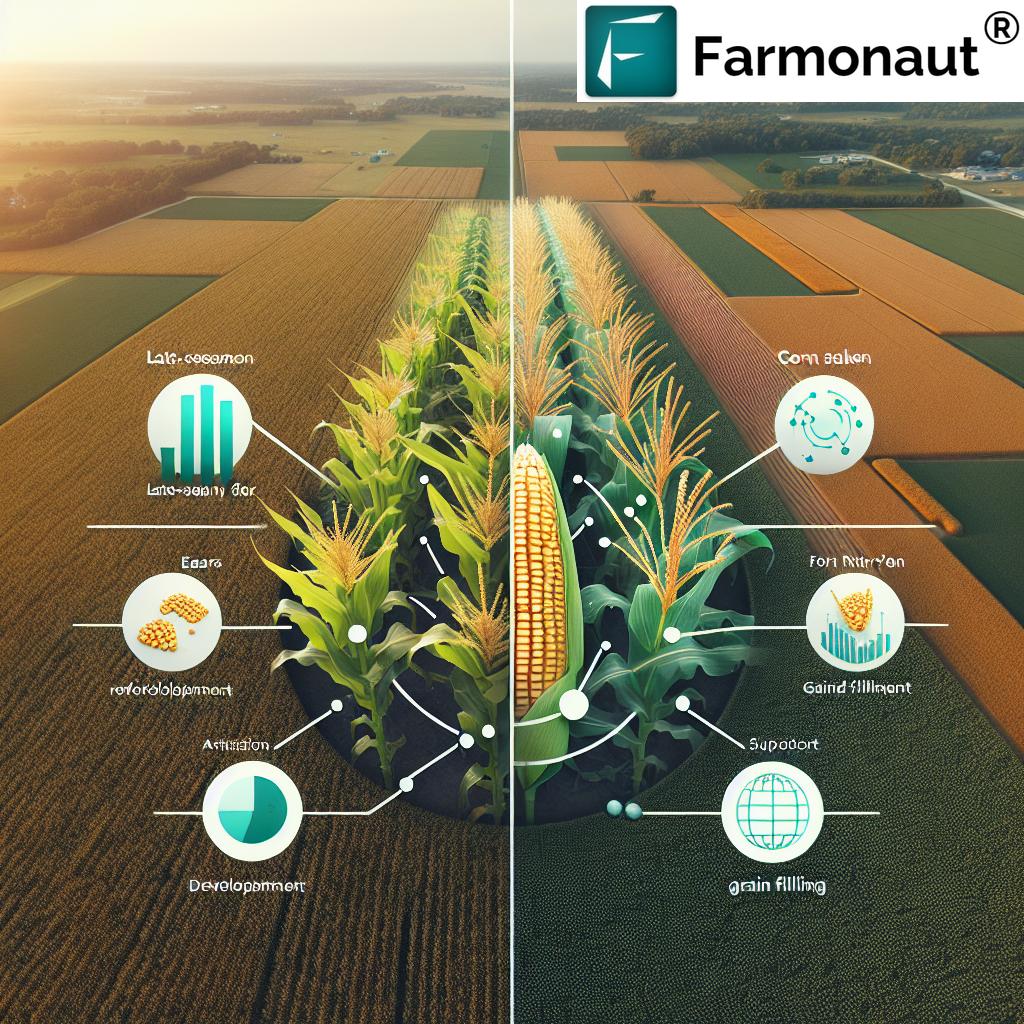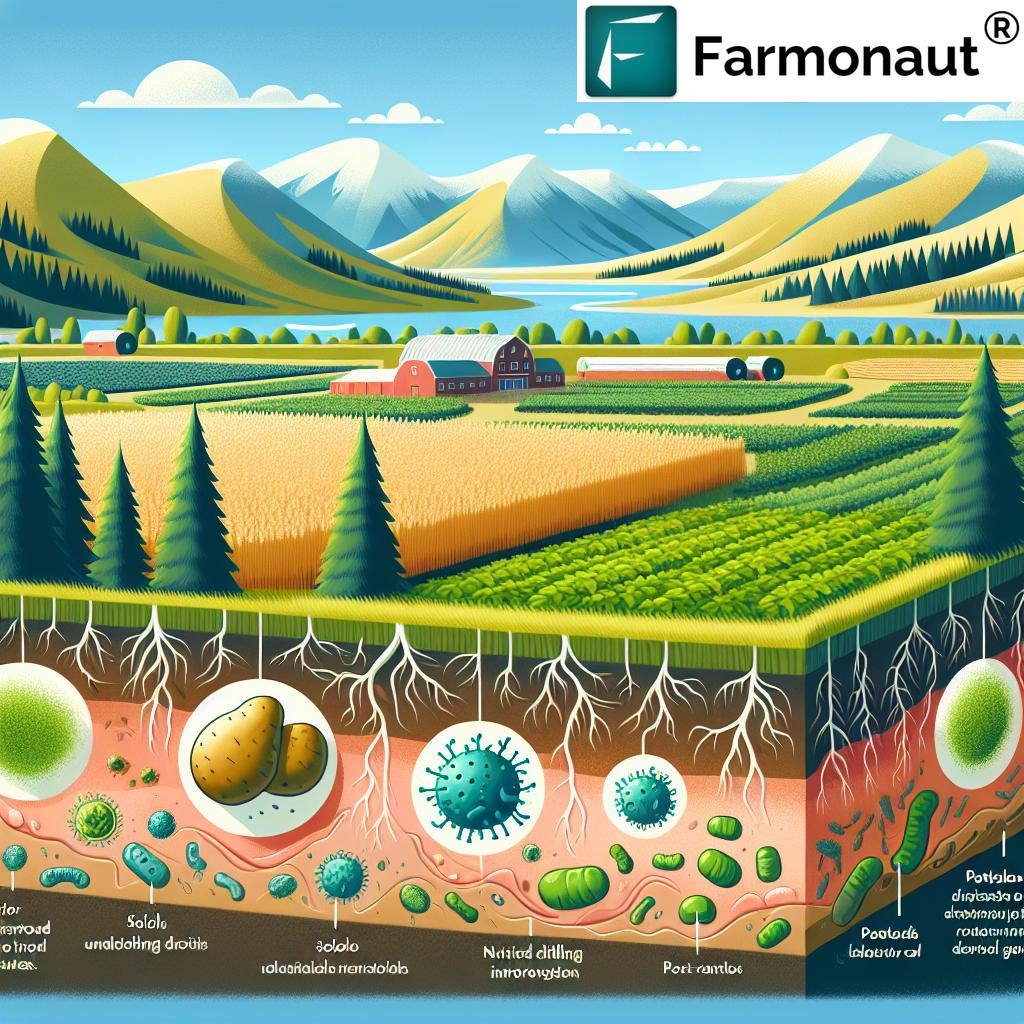PFAS Contamination in North Carolina Farmland: 7 Critical Risks Exposed
“Over 1 million acres of North Carolina farmland are at risk due to PFAS contamination in water and fertilizers.”
Introduction to PFAS Contamination in North Carolina Farmland
PFAS contamination in water, fertilizer, and farmland has emerged as one of North Carolina’s most pressing agricultural and environmental challenges of recent years. As research continues to uncover the pervasive risks of PFAS exposure, our farms, food supply, groundwater, and communities face unprecedented threats. The infamous 2022 fire at the Winston Weaver fertilizer plant in Winston-Salem brought this crisis to the forefront, revealing how quickly toxic chemicals can traverse from industrial mishaps to our farm fields—sometimes undetected until after the harm is done.
Today, we take a deep-dive into 7 critical risks exposed by PFAS contamination in the North Carolina agricultural landscape. We’ll explore the complex pathways—through water, fertilizer, sludge, and runoff—by which these chemicals contaminate soil, crops, and dairy, examine the alarming health effects including cancer risk, and highlight major regulatory and scientific gaps. Crucially, we introduce actionable solutions and technologies that offer hope for risk reduction and more sustainable, transparent farming.
What Are PFAS and Why Are They So Concerning?
PFAS (per- and polyfluoroalkyl substances) are an enormous family of synthetic compounds—over 15,000—and include the well-known chemicals PFOA and PFOS. Referred to as “forever chemicals,” they persist for decades in the environment and the human body. Used widely for their water and stain-resistant properties, PFAS are found not just in industrial products, but in firefighting foams, non-stick cookware, packaging, textiles, and, alarmingly, agricultural sludge and fertilizer.
North Carolina, renowned for its agricultural output and rich farmland, is now experiencing the dire consequences of PFAS contamination. From dairy farms in Yadkin County to the fields near Fayetteville’s Chemours plant, the threat to our food and water supply is no longer hypothetical—it’s measurable, persistent, and dangerously underestimated.
“PFAS exposure can increase cancer risk by up to 40% among populations living near contaminated agricultural sites.”
Understanding PFAS: Prevalence, Pathways & Persistence
PFAS Contamination Pathways in North Carolina Agriculture
- Water Sources: Rivers, groundwater, and streams near industrial zones and agricultural runoff sites have shown alarming PFAS detection levels.
- Fertilizer & Sewage Sludge: Application of contaminated sewage sludge or “off spec liquid fertilizer” introduces PFAS directly into agricultural soils.
- Fire-Related Runoff: Incidents like the Winston Weaver fertilizer plant fire resulted in chemical-laden firefighting water being spread as “fertilizer”—a little-known, high-risk contamination pathway, as seen with Shady Grove Dairy.
- Biosolids & Compost: More than 66,000 tons of sewage sludge were spread on North Carolina fields in 2023 alone, often without adequate PFAS controls.
- Consumer Wastewater: Everyday products contribute to PFAS build-up in wastewater treatment plants, which, after processing, often produce sludge used as fertilizer.
Scientific Properties: Why PFAS Linger So Long
The carbon-fluorine bond at the heart of PFAS molecules is one of the strongest in chemistry, making these compounds extremely resistant to breakdown. Whether introduced through sludge, fertilizer, fire runoff, or industrial discharge, PFAS can persist for decades—contaminating soil, water, and the food chain.
7 Critical Risks of PFAS Contamination in North Carolina Agriculture
The following sections break down the specific, interconnected risks posed by PFAS across different environmental compartments and agricultural practices in North Carolina.
1. PFAS in Water Sources: Drinking Water & Groundwater Contamination
Widespread PFAS contamination in North Carolina’s surface and groundwater is a direct risk to both farms and communities. State and EPA data have shown that many private wells, streams, and even public water supplies near contaminated farmland exceed safe PFAS limits. After the Winston Weaver plant fire, firefighting runoff was found to contain significant PFAS concentrations, eventually spreading to a dairy operation and nearby stream systems feeding the Yadkin River—source of drinking water for over 800,000 people.
- Main Environmental Risks: Persistent PFAS in groundwater may move offsite, impacting additional land and water supplies.
- Health Impacts: Exposure through drinking water is considered a major route for increased cancer risk, hormonal disruption, and immune system suppression.
Focus Keyword: PFAS in drinking water supplies
2. Fertilizer Plant Fire Environmental Impact
The 2022 fire at the Winston Weaver fertilizer plant is a classic example of how a single event can cause cascading environmental contamination. Over 500,000 gallons of water were used in firefighting efforts, creating runoff laced with PFAS and other chemicals (nitrate, benzene, ammonia), which was then stored and, by state agreement, spread on agricultural fields as “off spec liquid fertilizer.”
- Main Environmental Risks: Direct application of hazardous chemical mixtures on farmland, elevated nitrogen and ammonia levels leading to soil and water pollution.
- Key Terms: off spec liquid fertilizer risks, firewater runoff, groundwater contamination from sludge
3. PFAS in Sewage Sludge: Spreading Toxins with Fertilizer
Across North Carolina, the longstanding practice of applying treated sewage sludge (also known as biosolids) as fertilizer is now being scrutinized for its large-scale role in the movement of PFAS into soil and crops. More than 66,000 tons of sewage sludge were applied on North Carolina farm fields in 2023. Despite growing concerns, there are currently no specific state or federal rules for PFAS levels in this sludge or other fertilizers used to nourish farmland.
- Main Environmental Risks: Introduction of PFAS directly into food production systems; spread to drinking water supplies and the broader food chain.
- Health Impacts: EPA’s draft risk assessment for sewage sludge found that human health risks exceed thresholds when levels of PFOA or PFOS reach 1 part per billion (ppb).
Focus Keyword: PFAS in sewage sludge
4. Soil & Crop Contamination: PFAS Uptake by Food Crops
Research in Maine and North Carolina has shown that when PFAS-laden sludge or contaminated irrigation water is used, crops—including corn silage, grasses, hay—can absorb PFAS into edible tissues. While corn silage often shows lower levels than grasses, “if the levels in the soil are high enough, the levels in corn silage could be a concern,” warns University of Maine’s Dr. Glenda Pereira.
- Main Environmental Risks: PFAS can bioaccumulate in plant tissues and then transfer further up the food chain.
- Key Terms: testing for PFAS in soil, PFAS contaminated farmland
Did you know? Crops with higher water content often absorb more PFAS—posing a risk to vegetables, fruits, and grasses fed to livestock.
Focus Keyword: PFAS in soil
5. Impact on Milk and Dairy Products: Threats to Food Quality
In areas with PFAS-tainted soil and water, especially on dairy farms like those in Yadkin County (e.g., Shady Grove Dairy), there is documented risk of PFAS accumulating in cow’s milk. In Maine, high PFAS in milk forced farmers to pull products off market.
- Main Environmental Risks: Milk and dairy become vectors for human PFAS exposure, especially affecting farm families and local consumers.
- Key Terms: PFAS in dairy products, PFOS and PFOA health effects
Children drinking milk produced on contaminated farms face a significantly increased risk—up to 34 times higher—for certain health effects compared to safe standards. Adults are also at risk.
6. Health Risks to Farmers & Local Residents
According to EPA’s risk assessment, those living and working on impacted farmland face elevated human health risks. Not only are farmers and their families exposed through food, water, and soil, but the toxicity of certain PFAS compounds—including PFOA and PFOS—has been linked to cancers, immune disruption, and reproductive disorders.
- Main Environmental Risks: Long-term, multi-generational exposure; risk compounded by lack of effective remediation for contaminated soils.
- Key Terms: PFOS and PFOA health effects, PFAS exposure cancer risk
7. Regulatory Gaps, Standards, and Monitoring Failures
Despite the grave risks, North Carolina and the U.S. lack unified, enforceable regulations for PFAS in sludge, fertilizer, or food. Agencies like the N.C. Department of Environmental Quality (DEQ) and FDA have not implemented routine testing protocols for PFAS in dairy, crops, or soils. This regulatory lag allows PFAS to flow unchecked through the agricultural supply chain.
- Main Risks: Inadequate standards mean legal fertilizer or field applications may still create significant health and environmental risks. Gaps in testing, oversight, and communication among entities (DEQ, FDA, EPA) worsen the threat to local communities and farms.
- Key Terms: evolving standards, PFAS testing in food and farmland
PFAS Risks and Impacts Overview Table
| Source of PFAS Contamination | Estimated PFAS Levels (ppt) | Affected Farmland Area (Acres) | Main Environmental Risks | Key Health Impacts | Changing Regulatory Standards |
|---|---|---|---|---|---|
| Surface & Groundwater Contamination | 10–300+ ppt | 1,000,000+ (statewide risk) | Water pollution, bioaccumulation | Cancer risk, immune/hormonal disruption | EPA: 4 ppt for PFOA/PFOS in drinking water (2024); NC advisory at 70 ppt (2022) |
| Fertilizer (Incidents like Winston Weaver Fire Runoff) | Up to 11 ppt (PFOA+PFOS); multiple compounds detected | Several hundred (Shady Grove Dairy case) | Soil/surface water pollution, elevated nitrogen/ammonia | Long-term exposure, higher cancer risk via food chain | No current federal/state limit for PFAS in fertilizer |
| Sewage Sludge/Biosolids Applied to Fields | 20–800+ ppt (varies by application/source) | 66,000+ tons of sludge/year in NC | Soil degradation, groundwater contamination | Food chain exposure, multi-generational health effects | EPA draft: 1 ppb health threshold (few enforceable standards) |
| Dairy & Food Crops (Bioaccumulation) | Detected in milk, soil, produce (range: 0.1–10 ppt) | Dozens of dairies, thousands of acres | Contaminated food supply, loss of marketability | Increased cancer risk, developmental toxicity (children) | No FDA limits for PFAS in most foods |
For farm owners, agribusinesses, and governmental organizations seeking to monitor, trace, and mitigate environmental risks, Farmonaut’s blockchain-based traceability solution offers secure tracking and transparency for food products—from farm to consumer. Blockchain ensures every stage is verifiable, protecting supply chain integrity and supporting targeted recalls when needed.
Understand and manage your environmental impact with Farmonaut’s Carbon Footprinting tool, designed for real-time emissions tracking and sustainability compliance—a vital resource for modern agriculture navigating PFAS and other pollutant concerns.
Leveraging Technology for PFAS Risk Reduction: How Farmonaut Supports Sustainable Agriculture
As North Carolina grapples with PFAS contamination, it is essential for us—as advocates, regulators, and community members—to seek out next-generation technology. Farmonaut is at the forefront of this sustainability & environment revolution, providing cost-effective, real-time satellite monitoring and advisory solutions across web, Android, iOS, and API platforms.
-
Satellite-Based Crop Health Monitoring:
Farmonaut’s platform uses multispectral satellite imagery (NDVI and additional vegetation indices) to reveal changes in soil moisture, crop vigor, and field-level anomalies—helping detect possible adverse impacts of PFAS or other chemical exposure. - Resource Management: Advanced tools for logistics, fleet, and resource optimization minimize resource wastage and prevent over-application of fertilizers and sludge, reducing risks of chemical overload on soils and groundwater. Explore Farmonaut Fleet Management for detailed features.
- AI-Based Advisory: Farmonaut’s Jeevn AI Advisory System analyzes satellite and field data to suggest best crop management actions—vital when dealing with unexpected contamination risks or changing environmental conditions.
- API Integration: For developers and agribusinesses, Farmonaut API and Developer Docs enable seamless integration of satellite, weather, and environmental data—supporting audits, compliance, or tailored farm management tools.
-
Subscription services are available—see current available pricing and plans below, tailored for every scale and sector:
Learn how to automate your entire plantation or agro-enterprise with Farmonaut’s Large-Scale Farm Management solutions. Especially relevant for multi-field operations facing complex compliance and food safety needs.
Note: All Farmonaut platform features, solutions, and analytics are mobile-responsive and accessible via Android, iOS, or the web.
Changing Regulatory Standards & The Path Forward
Regulations for PFAS contamination in agriculture remain fragmented and incomplete. In 2024, the EPA finally set a 4 ppt combined limit for PFOA and PFOS in drinking water—yet gaps remain for other PFAS compounds and for sludge, fertilizer, and food controls. North Carolina’s agencies (DEQ and Department of Agriculture) have initiated surveys but are yet to implement routine farm product testing or comprehensive field-level standards.
- No current federal or North Carolina rules limit PFAS concentrations in farmland-applied sludge or off spec fertilizers.
- There are no mandatory limits for PFAS in milk or other farm produce, despite clear risks highlighted by state and federal agencies.
- EPA’s 2021 draft risk assessment (focused on sewage sludge) recognized that health risks begin at 1 ppb for PFOS/PFOA—yet did not include the full family of “nearly 15,000” PFAS chemicals.
- Efforts to reclassify PFOS and PFOA from hazardous to non-hazardous status are ongoing but are facing significant opposition from environmental and public health advocates.
Conclusion: Without robust and enforceable standards, the application of sludge, off spec fertilizer, and even treated municipal compost will continue to threaten North Carolina’s agricultural quality and public health.
Testing for PFAS in Soil, Water, and Crops: Science and Challenges
- Soil Testing for PFAS is still an emerging science. Methods exist but are not yet consistently applied across all contaminated farmland. Maine has published some of the first PFOS soil screening guides, especially for dairy farms and silage crops.
- Water Testing (wells, streams, irrigation) is crucial, especially for private wells close to areas with history of PFAS application. Due to PFAS persistence, a single application can threaten drinking water for decades.
- Food Product Testing is limited; the FDA has no formal screening requirement for PFAS in most farm products, including milk, beef, eggs, and produce, although some ad-hoc studies are underway.
Farmonaut’s satellite and data-driven approach supports early anomaly detection in crop health and soil moisture, which, when combined with on-site laboratory testing, can identify areas for targeted remediation.
Safeguarding Our Farms: Best Practices and Farmonaut’s Role
- Minimize application of untreated sewage sludge and industrial by-products unless verified as PFAS-free by laboratory testing.
- Only source fertilizer and compost from providers who offer transparent third-party PFAS test results and certifications.
- Implement zone-based satellite monitoring to track changes in soil health, crop vigor, and possible chemical stressors. (See how Farmonaut supports this across Android, iOS, and web platforms for low cost.)
- Test private wells and surface water sources regularly, especially in known risk areas.
- Document all sludge, fertilizer, and runoff applications—Farmonaut’s traceability tools can help ensure full supply chain record keeping.
- Monitor cattle feed (corn silage, hay, pasture) and milk for potential PFAS uptake—especially critical for dairies located near contaminated fields.
- Engage with local, state, and federal agencies to advocate for more comprehensive regulation, clear standards, and robust testing programs.
For modern farmers and agribusinesses in North Carolina seeking to balance productivity, traceability, and sustainability, adopting affordable, satellite- and AI-powered monitoring like Farmonaut is essential to proactively manage both visible and invisible risks to our land, food, and communities.
Frequently Asked Questions (FAQ) About PFAS Contamination in North Carolina
1. What are the primary sources of PFAS contamination in North Carolina farmland?
The main sources include contaminated surface and groundwater (often due to industrial discharge), application of PFAS-containing sewage sludge or off spec fertilizer on fields, and runoff from events like fertilizer plant fires.
2. What health risks do PFAS pose to families living on or near contaminated farms?
PFAS exposure is linked to increased cancer risk, immune suppression, hormonal disruption, developmental and reproductive issues—especially when ingested through water, dairy, or produce grown in contaminated areas.
3. How can I test my soil, water, or dairy products for PFAS?
Specialized laboratory analysis is required—contact your local DEQ office or agricultural extension for guidance. Satellite-based monitoring (as offered by Farmonaut) can flag areas showing possible contamination, prioritizing field or source testing.
4. Are there regulations limiting PFAS in farm products and fertilizers?
As of 2024, EPA has set a drinking water standard (4 ppt for PFOA/PFOS), but there are no specific federal or North Carolina rules for PFAS in sludge, fertilizer, or food (milk, beef, produce).
5. How can Farmonaut solutions help protect North Carolina farms from PFAS risk?
Farmonaut empowers users to monitor crop and soil health remotely, optimize resource use (reducing risky inputs), and maintain transparent traceability records—enabling early risk detection, smart decision making, and streamlined regulatory compliance.
Explore Farmonaut’s crop plantation and forest advisory system for comprehensive, real-time insights on field health, resource needs, carbon and pollutant tracking—helping protect every acre from invisible chemical threats.
Conclusion: Towards a PFAS-Free Agricultural Future
As the risks underscored by the 2022 Winston Weaver fertilizer plant fire and the wider North Carolina PFAS crisis reveal, our agricultural system stands at a crossroads. The invisible legacy of “forever chemicals” will persist for generations unless we rapidly adopt a prevention-first mindset grounded in science, regulation, and technological innovation.
We must demand better standards, support comprehensive testing, and invest in traceable, data-driven solutions—Farmonaut stands ready to assist every farm, cooperative, and institution in this mission. By combining affordable, satellite-based crop monitoring, transparent product traceability, and AI-powered insights, we can safeguard North Carolina’s farmland, food supply, and communities for decades to come.
Together, let’s lead North Carolina and the world toward safer, PFAS-free farms and a sustainable agricultural future.



